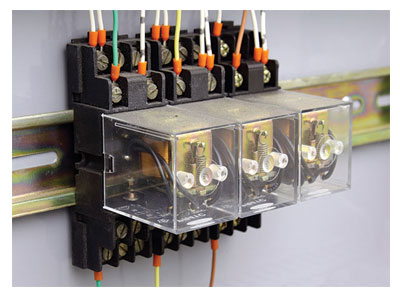Key Takeaway
The electromechanical relay (EMR) is the most commonly used type of relay. It operates by using an electromagnetic coil that opens or closes contacts to control a circuit. Electromechanical relays are favored in various applications because of their simplicity, reliability, and capability to manage high voltages and currents. This makes them suitable for a wide range of uses, from industrial equipment to household appliances, where durable and effective circuit control is essential. Their proven performance and cost-effectiveness contribute to their popularity across multiple industries.
Overview of Popular Relay Types
Relays play a pivotal role in electronic and electrical systems, acting as crucial components for controlling high power devices using low power signals. Among the various types, the electromechanical and solid-state relays stand out as the most commonly used. Electromechanical relays, known for their robust performance, utilize physical moving parts to create circuit connections. Conversely, solid-state relays provide a faster, quieter, and more reliable performance by switching circuits electronically without moving parts. Each type has its own set of applications and advantages, tailored to specific industry needs.

Advantages of Electromechanical Relay
Electromechanical relays are the workhorses of the relay world, prized for their robustness and straightforward operation. These devices excel in handling high voltages and currents, making them indispensable in heavy-duty environments. What sets them apart is their ability to provide excellent electrical isolation through physical contact separation, significantly reducing the risk of interference—a crucial factor in ensuring system integrity.
Moreover, their durability and cost-effectiveness make them an economical choice, especially in industries where budget and maintenance simplicity are key considerations. For a newly joined engineer, understanding these attributes can be vital in environments where reliable and cost-efficient solutions are prized.
Solid-State Relays: Why They Are Widely Used
In the fast-evolving landscape of industrial automation, solid-state relays (SSRs) have carved a niche for their exceptional reliability and swift performance. These relays operate without any moving parts, which not only increases their lifespan but also eliminates the mechanical wear and tear that plagues traditional relays.
SSRs switch circuits in near silence and at speeds unattainable by their electromechanical counterparts, a feature crucial in high-speed applications. Their resistance to vibration and environmental impacts further enhances their suitability for precision-dependent processes. For any engineer stepping into the field, leveraging SSRs means tapping into a technology that ensures accuracy and efficiency, particularly in sophisticated, automated setups.
Application Areas of the Most Used Relays
Relays, both electromechanical and solid-state, find their niches in diverse fields, adapting seamlessly to various industrial demands. In industrial automation, electromechanical relays are the backbone of power distribution systems, handling heavy loads with robust reliability, essential for maintaining system stability and safety. Their mechanical nature allows them to withstand rigorous conditions, making them indispensable in sectors that demand durability.
Switching to the realm of sensitive electronics, solid-state relays shine brightly. Their presence in computer interfaces and microprocessor-controlled systems underscores their critical role in ensuring swift and precise operation. The absence of mechanical parts means these relays can operate at incredible speeds, a necessity in rapidly advancing technological environments. Their reliability and speed make them a top choice for applications where precision and quick response times are paramount, such as in telecommunications and high-speed data processing.
For you, the emerging engineer, understanding where and why these relays are used opens doors to optimizing system designs and troubleshooting with confidence. Whether it’s ensuring the robust performance of heavy machinery or enhancing the precision of high-tech electronics, the right relay choice can significantly influence the success of your projects.
Factors Influencing Relay Selection in Different Sectors
Selecting the perfect relay isn’t just about choosing a type; it’s about understanding the nuanced demands of each application. For example, in manufacturing sectors where machines endure significant mechanical stress, the ruggedness of electromechanical relays makes them a preferable choice. These relays can manage high currents and rough conditions, providing the reliability needed for such harsh environments.
Conversely, in sectors like semiconductor manufacturing, where precision and speed are non-negotiable, solid-state relays are the heroes. Their ability to operate without mechanical motion allows for a quicker, more accurate response, essential for the high-speed and delicate operations typical in this field.
Other vital factors in relay selection include cost considerations, which can dictate the feasibility of a project, and availability, which can affect timelines. Adherence to industry-specific standards also plays a critical role, ensuring that the selected relays meet regulatory requirements and application needs. As a new engineer, grasping these selection criteria will equip you to make informed decisions that optimize both performance and cost-efficiency in your projects.
Conclusion
Selecting the most appropriate relay is vital for ensuring optimal performance, longevity, and reliability of electronic systems. By understanding the specific requirements of the application and the advantages of different types of relays, engineers can make informed decisions that balance cost, performance, and durability. Whether it’s for a high-power industrial application or a delicate electronic device, the right relay choice is key to successful operation and maintenance.
